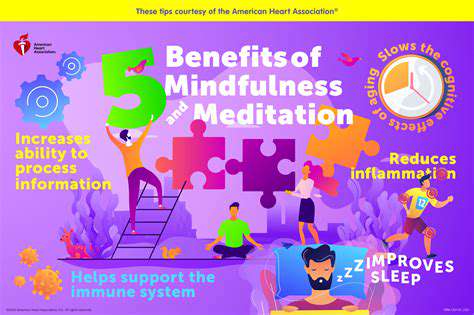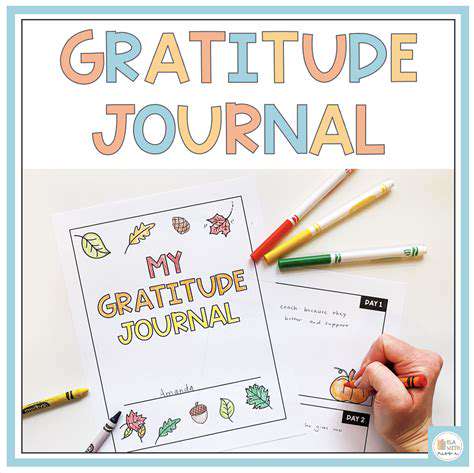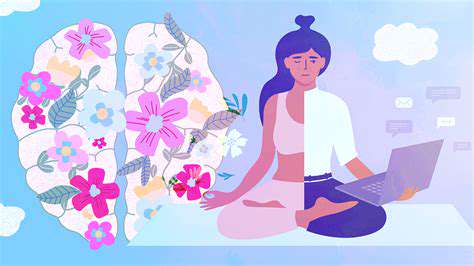Boosting Your Ability to Focus and Enhance Attention
Identifying Common Distractions
Understanding Internal Distractions
Internal distractions refer to the thoughts and feelings that occupy our minds and divert our attention from the task at hand. These can include worries about upcoming deadlines, personal issues, or even wandering thoughts unrelated to work. Recognizing these internal distractions is the first step towards addressing them.
One way to manage internal distractions is through mindfulness techniques. Practices like meditation and deep-breathing exercises can help clear the mind and improve concentration. By focusing on the present moment, individuals can reduce the impact of disruptive thoughts.
Another effective strategy involves the use of a distraction journal. By writing down nagging thoughts or worries, individuals can acknowledge them without allowing them to consume their attention. This process can create a mental space conducive to focus.
Additionally, setting specific times for reflection throughout the day can help minimize interruptions from internal distractions. When individuals know they have allocated time to think about personal issues, they can concentrate better during work periods.
Identifying External Disruptions
External distractions are elements in our environment that can disrupt focus. Common sources of external distractions include noise, visual clutter, and interruptions from colleagues or family members. Acknowledging these distractions is crucial for improving concentration.
To mitigate external disruptions, individuals can create a dedicated workspace tailored to their needs. This includes minimizing noise by using noise-canceling headphones or setting up in a quieter area. Also, reducing visual clutter can help maintain a more focused mind.
Setting boundaries with those around you can also reduce interruptions. Communicating specific work times or using “do not disturb” signals can signal to others that focus is desired, thereby minimizing external disturbances.
Implementing time management techniques like the Pomodoro Technique can also help combat external distractions. By working in short focused bursts followed by breaks, individuals can ensure they stay on task while allowing for brief periods of recharge amidst interruptions.
Developing Strategies to Stay Focused
Developing a set of personalized strategies can significantly enhance one's ability to focus. This may include establishing routines that signal the start and end of work periods, which can activate a focused mindset. Consistency in these routines can aid in building a habit of concentration.
Additionally, utilizing tools like to-do lists or digital productivity apps can help individuals stay on track. Breaking work into manageable tasks and checking them off as they are completed can provide a sense of accomplishment and motivation.
Creative visualization techniques can also enhance focus. By mentally picturing the goals and the steps necessary to achieve them, individuals can reinforce their dedication and commitment to the task. This mental rehearsal can help maintain attention during challenging work periods.
Finally, regular breaks are essential for maintaining long-term focus. Engaging in physical activity or stepping outside for fresh air can rejuvenate the mind, making it easier to return to work with renewed energy and concentration.
The Role of Technology in Distraction Management
Technology can serve as both a distraction and a tool for managing distractions. On one hand, social media notifications and constant email alerts can detract from focus. On the other hand, technology provides various solutions for improving attention management.
To combat digital distractions, individuals should consider employing apps that block distracting websites during work hours or set their devices to "Do Not Disturb" mode to minimize interruptions. Mindfulness and productivity apps can also encourage focused work habits.
Additionally, using timers or time management applications can help create a structured work environment. These tools can promote awareness of how time is spent, allowing individuals to identify when they are becoming distracted.
Finally, educating oneself on the impact of technology on attention can foster better habits. Understanding the psychological effects of constant notifications can motivate individuals to create a more conducive work environment by limiting unnecessary digital interruptions.
Establishing a Productive Environment
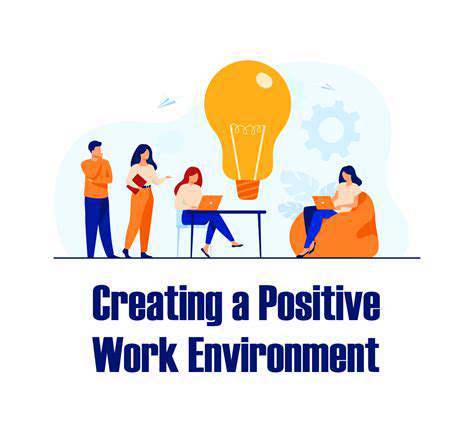
Organizing Your Space
Creating an organized workspace is fundamental to enhancing focus. A cluttered environment can lead to distractions and decreased productivity. To optimize your setup, start by decluttering your desk and removing non-essential items. Ensuring everything has a designated place helps maintain that order over time.
Using storage solutions like shelves and bins can further aid in organization. Labeling items and keeping frequently used tools within reach minimizes time wasted searching for them. Additionally, regularly assessing your space keeps it aligned with your needs and goals.
Incorporating personal touches, such as plants or artwork, can make the environment more inviting. However, it's important to balance personalization and distraction to maintain focus. Regularly refreshing your workspace can also reinvigorate your motivation.
A well-organized environment not only enhances focus but also contributes to mental clarity. This clarity is crucial for sustaining higher levels of attention throughout your tasks. By investing the time to organize your space, you are setting the stage for successful and focused work sessions.
Minimizing Distractions
To improve your ability to focus, it's essential to minimize distractions. Identify the major sources of distraction in your environment, such as noise, notifications, or interruptions from others. By recognizing these distractions, you become more empowered to address them effectively.
Implementing noise-canceling headphones or playing background music can help block out disruptive sounds. Additionally, consider using apps that limit notifications from your phone and computer during work hours. This can create a more serene environment conducive to deep work and sustained attention.
Establishing boundaries with coworkers or family members can also minimize interruptions. Using techniques such as closed doors or 'do not disturb' signs signals your focus time. Clear communication about your work periods can foster respect for your need to concentrate.
Regular breaks from work are essential to maintain ongoing focus as well. Schedule short intervals for rest and recharge without distractions. This balanced approach allows for sustained attention without burnout, ultimately enhancing productivity.
Utilizing Time Management Techniques
Time management techniques can significantly boost your focus and attention. The Pomodoro Technique, for example, encourages working in focused intervals followed by short breaks. This method not only increases productivity but helps maintain concentration on the task at hand.
Another approach is to prioritize tasks using methods like the Eisenhower Matrix. By categorizing tasks based on urgency and importance, you can streamline your focus on what truly matters. This practice reduces overwhelm and provides a clearer path forward.
Creating a daily schedule that outlines your work sessions can also enhance focus. Setting specific time slots for dedicated tasks promotes accountability and chunking of larger projects into manageable pieces. Sticking to a schedule cultivates discipline and improves overall attention levels.
Lastly, review and refine your time management techniques regularly. What works for one person may not be effective for another, so adapt methods to suit your unique style. Continually honing these techniques leads to improved focus and efficiency over time.
Incorporating Mindfulness Practices
To enhance attention and focus, incorporating mindfulness practices can be incredibly beneficial. Mindfulness meditation encourages you to become aware of your thoughts and feelings without judgment. Regular practice can significantly improve your concentration and reduce stress levels.
Engaging in short mindfulness exercises before work can prepare your mind for focused activity. Techniques such as deep breathing or body scans can reset your mental state and ensure you're attentive to your tasks. Even a few minutes can clear distractions and enhance your overall productivity.
Throughout the day, taking mindful pauses allows you to check in with your mental clarity. Techniques like stretching or short walks can provide physical breaks while keeping you grounded. Such practices help mitigate the mental fatigue that accumulates during intense focus periods.
Finally, reflecting on your work sessions through mindfulness can reveal patterns in your attention. Assess what times you feel most focused and adapt your schedule accordingly. Investing in mindfulness not only enhances your ability to focus but enriches your overall work experience.
Implementing Time Management Techniques

Understanding Time Management Techniques
Effective time management techniques are essential for improving focus and enhancing attention. By learning to prioritize tasks, individuals can allocate their time more wisely, leading to greater productivity. Implementing these techniques can significantly reduce stress and overwhelm. It allows for a clearer view of responsibilities and deadlines, which can improve overall performance.
One popular approach to time management is the Pomodoro Technique, which encourages short bursts of focused work followed by brief breaks. This method not only boosts concentration but also helps prevent burnout. By breaking work into manageable intervals, you can maintain higher levels of focus and efficiency.
In addition to structured techniques, personalizing your approach based on individual needs can enhance effectiveness. Identifying peak productivity periods and scheduling the most challenging tasks during these times can result in better outcomes. Experimenting with different methods is crucial to finding what works best for you.
Overall, mastering time management techniques can lead to improved focus and a greater ability to maintain attention on tasks at hand. Continual practice and refinement of these skills can result in lasting benefits in both personal and professional environments.
Setting Clear Goals for Improved Focus
Setting clear and attainable goals is a foundational aspect of enhancing focus and attention. Goals provide direction and motivation, making it easier to stay engaged with tasks. By establishing specific objectives, individuals can channel their efforts toward achieving them more effectively.
It is beneficial to break larger goals into smaller, actionable steps. This not only makes the overall process less daunting but also allows for a sense of accomplishment as each step is completed. Tracking progress regularly can reinforce commitment and focus.
Using techniques such as SMART goals—Specific, Measurable, Achievable, Relevant, and Time-bound—can guide in creating effective targets that boost focus. This framework ensures that goals are not only ambitious but also realistic, making them easier to attain.
Creating a vision board or written reminders of your goals can keep your objectives top of mind, further enhancing focus. Over time, consistently setting and achieving goals can lead to a stronger attention span and increased productivity.
Minimizing Distractions for Better Attention
Minimizing distractions is a key component in enhancing attention and maintaining focus. In a world filled with interruptions, creating a conducive environment is essential for effective work. This can involve decluttering your workspace and eliminating unnecessary noise.
Digital distractions are particularly challenging, making it important to manage technology usage. Simple strategies such as turning off notifications or using apps that limit time spent on social media can be very effective. By taking control of your digital environment, you can significantly increase your attention span.
Additionally, establishing a routine that includes designated time blocks for tasks can help mitigate distractions. Sticking to a schedule can train your brain to concentrate during specific periods, thereby improving overall productivity. Incorporating regular breaks can also rejuvenate your mind and enhance focus.
Ultimately, recognizing potential distractions and proactively addressing them can lead to improved attention and focus. Creating a personalized workspace that encourages concentration can make a substantial difference in your ability to stay on task.
Evaluating and Adjusting Your Focus Strategies
Regularly evaluating and adjusting focus strategies is crucial for long-term success. What works for one person may not be effective for another, so it’s important to be flexible and willing to experiment with different techniques. This process encourages self-reflection and boosts your ability to concentrate over time.
Keeping a focus journal can be beneficial for tracking what strategies improve or hinder your attention. This insight allows for informed adjustments tailored to personal needs. Continuous reflection on both successes and challenges can refine your approach to enhancing focus.
Seeking feedback from peers or mentors can also provide new perspectives on improving focus strategies. Collaboration and sharing experiences can lead to discovering effective techniques you may not have considered.
Incorporating new strategies while eliminating ineffective ones can create a synergistic effect that amplifies focus and attention capabilities. Consistent evaluation and adaptation are key to mastering your ability to maintain concentration.
Practicing Mindfulness and Meditation
Understanding Mindfulness
Mindfulness is the practice of being fully present and engaged in the moment, without judgment. By training your mind to focus on the here and now, mindfulness allows you to develop a greater awareness of your thoughts and feelings. This heightened awareness can lead to improved clarity and concentration, making it easier to tackle complex tasks without distraction.
Regular mindfulness practice has been shown to reduce stress and anxiety, which can often impede one’s ability to focus. Techniques such as deep breathing and body scans help ground individuals, allowing them to clear their minds of clutter and enhance their attention spans over time.
The Benefits of Meditation for Focus
Meditation is a powerful tool for enhancing focus, as it encourages the brain to enter a state of calm, which is conducive to concentration. By practicing meditation regularly, you can strengthen your cognitive abilities and enhance your capacity to direct your attention towards specific tasks. Even just a few minutes of meditation each day can have significant effects on your overall mental clarity.
In addition to improving focus, meditation fosters a sense of emotional stability and resilience. This means that even when faced with distractions or stressors, individuals who meditate regularly are better equipped to regain their focus and maintain productivity. By cultivating this discipline, you can achieve a more robust attention span in your daily activities.
Prioritizing Physical Health
Importance of Regular Exercise
Engaging in regular physical activity is essential for maintaining a healthy body, which in turn supports mental well-being. Exercise increases the flow of oxygen to the brain, promoting improved cognitive functions and sharper focus. Even moderate activities like walking or cycling can have significant benefits.
Additionally, exercise releases endorphins, which are known as the body's natural mood lifters. This not only helps to reduce stress and anxiety but also encourages a positive mindset, making it easier to concentrate on tasks at hand.
Nutrition's Role in Cognitive Function
A balanced diet plays a crucial role in enhancing attention and focus. Foods rich in antioxidants, healthy fats, vitamins, and minerals provide the necessary nutrients for optimal brain function. For instance, omega-3 fatty acids found in fish are linked to improved memory and cognitive abilities.
Moreover, staying hydrated is vital, as even mild dehydration can impair concentration and cognitive performance. Incorporating brain-boosting foods such as berries, nuts, and leafy greens into your diet can further enhance mental clarity and attention span.
Restorative Sleep Habits
Quality sleep is fundamental to cognitive processes, including memory, learning, and focus. Insufficient sleep can lead to increased distractions, reduced cognitive performance, and difficulties in maintaining attention. Establishing a consistent sleep schedule and creating a restful environment are vital for achieving restorative sleep.
Incorporating relaxation techniques before bedtime, such as reading or meditation, can help in winding down and preparing the mind for a good night's rest. Prioritizing sleep hygiene ensures that the brain is well-rested and ready to tackle challenges with enhanced focus.
Mindfulness and Mental Health
Practicing mindfulness and meditation can significantly enhance your ability to concentrate. These techniques encourage you to focus on the present moment, reducing the mental clutter that often distracts from tasks. Regular mindfulness practice can improve attention span and increase overall mental clarity.
Furthermore, being aware of your mental state can help identify stressors that affect focus. By addressing these anxieties through mindfulness, individuals can cultivate a clearer, more focused mindset, fostering a greater capacity for attention in their daily activities.
Utilizing Technology Wisely
1. The Role of Digital Tools in Enhancing Focus
In today's digital age, technology can be a double-edged sword when it comes to maintaining focus. On one hand, digital tools like productivity apps and time management software can significantly enhance your ability to concentrate on tasks. These applications help users organize their tasks, set reminders, and prioritize their workload, ensuring they stay on track.
Furthermore, certain tools offer features such as Pomodoro timers or focus music, which can help users create a conducive environment for work. By breaking tasks into manageable intervals, individuals can maintain sustained attention without feeling overwhelmed. This structured approach can lead to increased efficiency and productivity.
However, it's crucial to choose the right tools. With an overwhelming number of apps available, it can be tempting to try every new solution. Focusing on a select few that align with your personal productivity style can boost effectiveness while minimizing distractions.
Finally, acknowledging the time spent on technology itself is key. Setting limits on usage and ensuring technology serves as a facilitator rather than a distraction can create a more balanced relationship with digital tools.
2. Creating a Distraction-Free Digital Environment
One of the most significant advantages of utilizing technology is the ability to curate your digital environment. A distraction-free space can significantly enhance your ability to focus. This means decluttering your desktop, organizing files, and minimizing notifications from apps and devices that are not essential.
Additionally, consider using features that allow you to mute or turn off notifications during focused work sessions. This simple change can prevent interruptions and help maintain a sustained attention span on the task at hand. Many smartphones and computers now offer "Do Not Disturb" modes that can be utilized effectively.
Furthermore, combining digital decluttering with physical organization can create a powerful focus zone. Ensuring that your workspace is tidy and that your digital files are well-organized can further eliminate distractions and make it easier to dive into work.
Ultimately, the goal is to cultivate an environment—both physically and digitally—that supports deep work and concentration, allowing for greater creativity and productivity.
3. Mindfulness Practices to Augment Digital Use
Incorporating mindfulness practices into your daily routine can significantly enhance your ability to focus, especially when combined with technology. Mindfulness encourages individuals to be present and fully engaged in the task they are performing, which naturally leads to improved attention levels.
Technological tools can also facilitate mindfulness. For example, meditation apps can guide users through sessions that promote relaxation and improve focus. Setting aside just a few minutes for mindfulness each day can help clear the mind and prepare you for a productive work session.
Additionally, implementing techniques such as deep breathing, brief pauses during tasks, or stretching breaks can combat fatigue and loss of focus. By integrating these practices into your technology routine, you can ensure that your periods of concentrated work are more effective.
In summary, blending technology with mindfulness creates a holistic approach to enhancing attention. By being intentional about both your digital tools and your mental state, you can cultivate a productive and focused work environment that promotes your best work.
Setting Clear Goals and Priorities
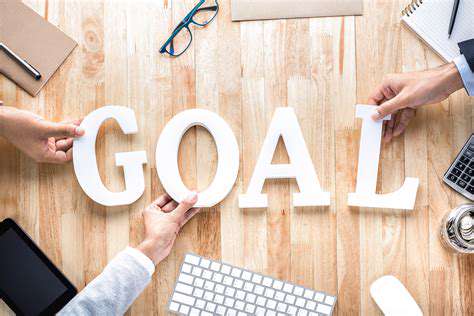
Understanding the Importance of Goals
Setting clear goals is fundamental to improving your focus. When you define what you want to achieve, you create a roadmap that guides your actions. Goals serve as a motivational tool, helping you to stay engaged with your tasks.
Without defined objectives, it's easy to become distracted and lose sight of what truly matters. This lack of direction can lead to frustration and decreased productivity.
Additionally, having specific targets allows you to measure your progress. You can celebrate milestones along the way, which boosts your morale.
Goals can also help in prioritizing your tasks effectively. By understanding what needs to be accomplished first, you minimize the risk of overwhelm.
Ultimately, clear goals provide a sense of purpose, making it easier to focus your attention on what is most important.
Strategies for Setting Priorities
Effective prioritization involves categorizing tasks based on their urgency and importance. One useful framework is the Eisenhower Matrix, which divides tasks into four quadrants.
Another approach is to use the "80/20 rule," where you identify the 20% of tasks that yield 80% of your results. Focusing on these critical responsibilities can significantly enhance your productivity.
Regularly reviewing your priorities is also essential. What seemed important yesterday may not hold the same significance today. By adapting your focus as needed, you can ensure that your efforts align with your evolving objectives.
Additionally, consider setting deadlines for your goals. Without a timeline, it's easy to procrastinate and let tasks linger indefinitely.
Lastly, don’t be afraid to delegate or eliminate tasks that are not aligned with your core goals. This can free up time and mental space, allowing you to concentrate on what truly matters.
